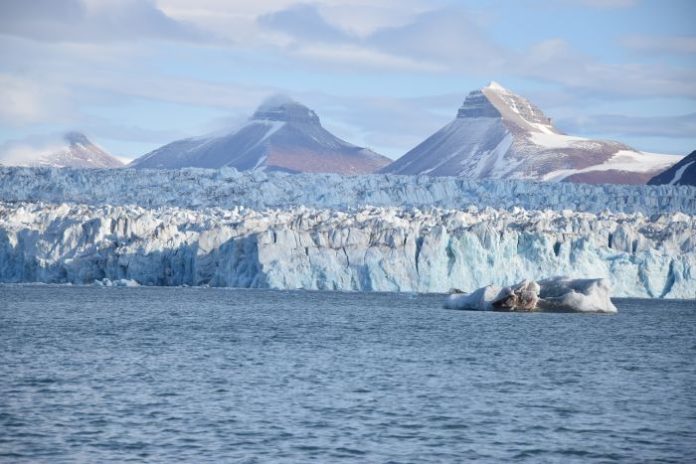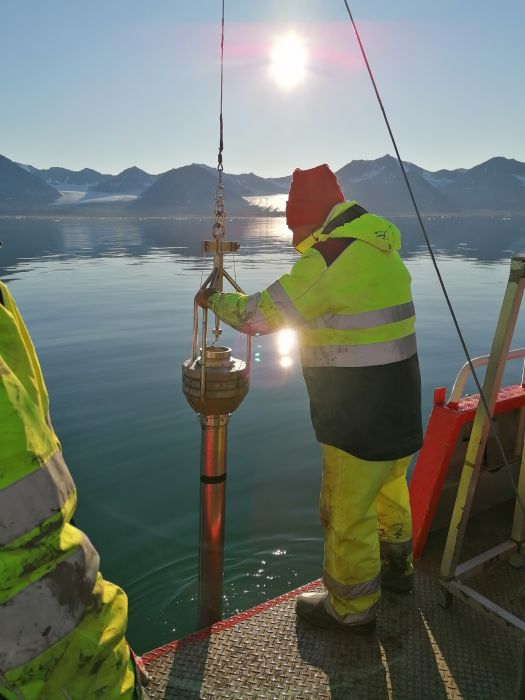
The Arctic Ocean began warming rapidly at the beginning of the 20th century, decades earlier than modern experimental measurements have so far documented. The news comes from an international research group coordinated by the Institute of Polar Science (Cnr-Isp) and Marine Science (Cnr Ismar) of the National Research Council in Bologna with the collaboration of Cambridge University. The cause is a phenomenon long known as ‘atlantification’, i.e. a progressive intrusion of Atlantic waters (warm and salty) into the Arctic domain (cold and fresh). The work, published in the journal Science Advances, identifies for the first time the historical dating of this phenomenon.
“Arctic atlantification is progressively accelerating, however, prior to our study we did not have a historical view of this process, as satellite observations are limited to roughly the last 40 years. Instead, this water change preceded the warming documented by satellites and observational sites”, explains Tommaso Tesi, first author of the paper and researcher at CNR-Isp.
For the study, the research team looked at a region at the entrance to the Arctic Ocean, along the eastern side of the Fram Strait between Greenland and Svalbard. “We analysed a marine sedimentary record – our ‘time machine’ – looking for diagnostic signs of atlantification, such as changes in temperature and salinity,” Tesi continues. “By ‘reading’ the chemical signatures found in marine microorganisms, we found that since the beginning of the 20th century, ocean temperature has increased by about 2 degrees Celsius, while sea ice has receded and salinity has increased. In fact, when we looked at the entire 800-year period, our temperature and salinity records were fairly constant, but when we looked at the beginning of the 20th century, we saw a marked change in these parameters.
“All the world’s oceans are warming due to climate change, but the Arctic Ocean, the smallest and shallowest of the oceans, is warming the fastest of all. The rate of warming in the Arctic is more than twice the global average, due to melting sea and land ice,” says Francesco Muschitiello, co-author of the paper and a researcher in the Department of Geography at the University of Cambridge. “We compared our results with ocean circulation at lower latitudes and found that there is a strong correlation with the slowdown in dense water formation in the Labrador Sea (an arm of the North Atlantic Ocean that lies between the Labrador Peninsula and southern Greenland).

In a future warming scenario, the deep circulation in this subpolar region is expected to decrease further due to the melting of the Greenland ice sheet. Our results imply that we could expect further Arctic atlantification in the future due to climate change.” The results of the new Science Advances study are not yet accounted for in current climate models, which poses a problem in delineating future trends. “Climate simulations generally do not reproduce this kind of warming in the Arctic Ocean, which means there is an incomplete understanding of the mechanisms driving atlantification,” Thesis concludes. “We rely on these simulations to project future climate change, but the lack of evidence of early warming in the Arctic Ocean is a missing piece of the puzzle.”
The research was made possible thanks to the Base Dirigibile Italia, a permanent infrastructure in the Arctic managed by CNR-Isp (https://www.isp.cnr.it/index.php/it/infrastrutture/stazioni-di-ricerca/stazione-artico-dirigibile-italia).



































